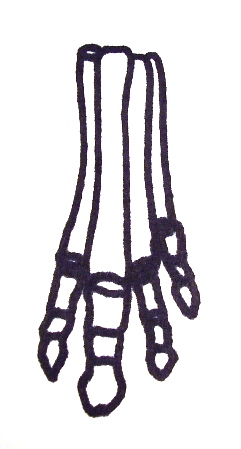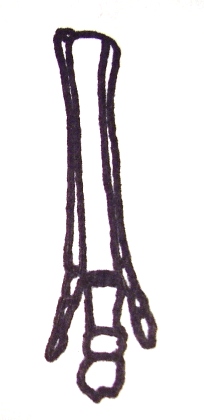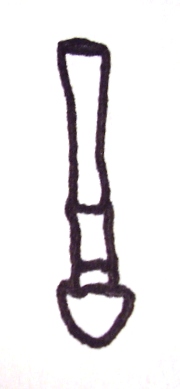Home
- Summary
- Historical Views
- Equidae Through the
Ages - Extant
Equids - Glossary - References
Marsh's Genealogy of the Horse



Reduction of toes from Hyracotherium to Mesohippus to Equus
Modified from MacFadden 1992.
In 1870, the famed geologist Thomas Henry Huxley made a presentation to the Geological Society of London, in which he used a sequence of European fossils from the family Equidae to show a linear evolutionary trend toward fewer toes and longer teeth (Gould 1987). Four years later, palaeontologist Othniel C. Marsh published a paper in which he used a sequence of American fossils to show the same trend in Equidae (Gould, 1987). Both Huxley and Marsh, who conferred on the problem in 1876, concluded that the American fossil sequence was more complete and that the evolution of horses occurred mainly in North America, with eventual and repeated dispersal into Europe (MacFadden 1992). They also agreed that their fossil evidence was proof that the evolution of horses occurred in a linear pattern, trending toward fewer toes and higher-crowned teeth (MacFadden 1992). In 1879, Marsh published the first figure depicting the presumed evolutionary trends in the family Equidae, which included sketches of the forelimbs, hindlimbs, and upper and lower molars of the following sequence of genera: Orohippus - Mesohippus - Miohippus (Anchiterium) - Protohippus (Hipparion) - Pliohippus - Equus (MacFadden 1992).
